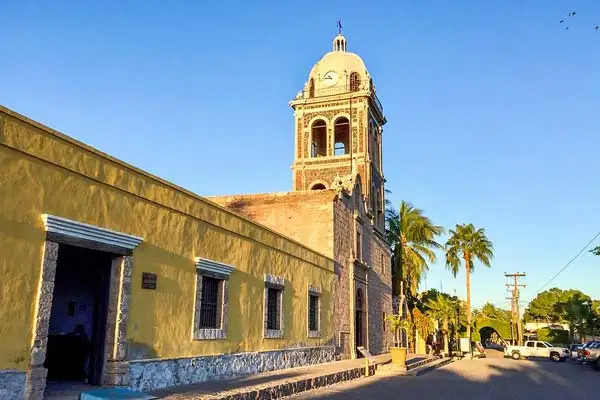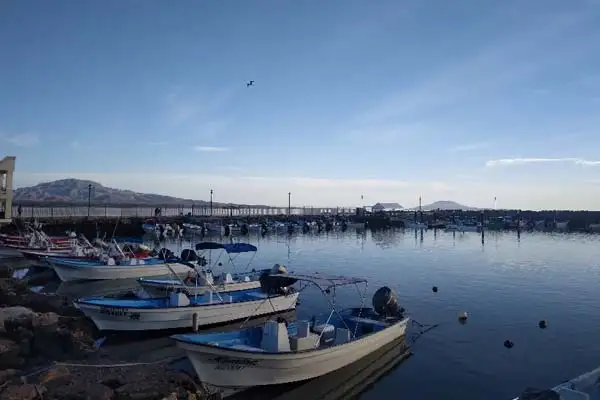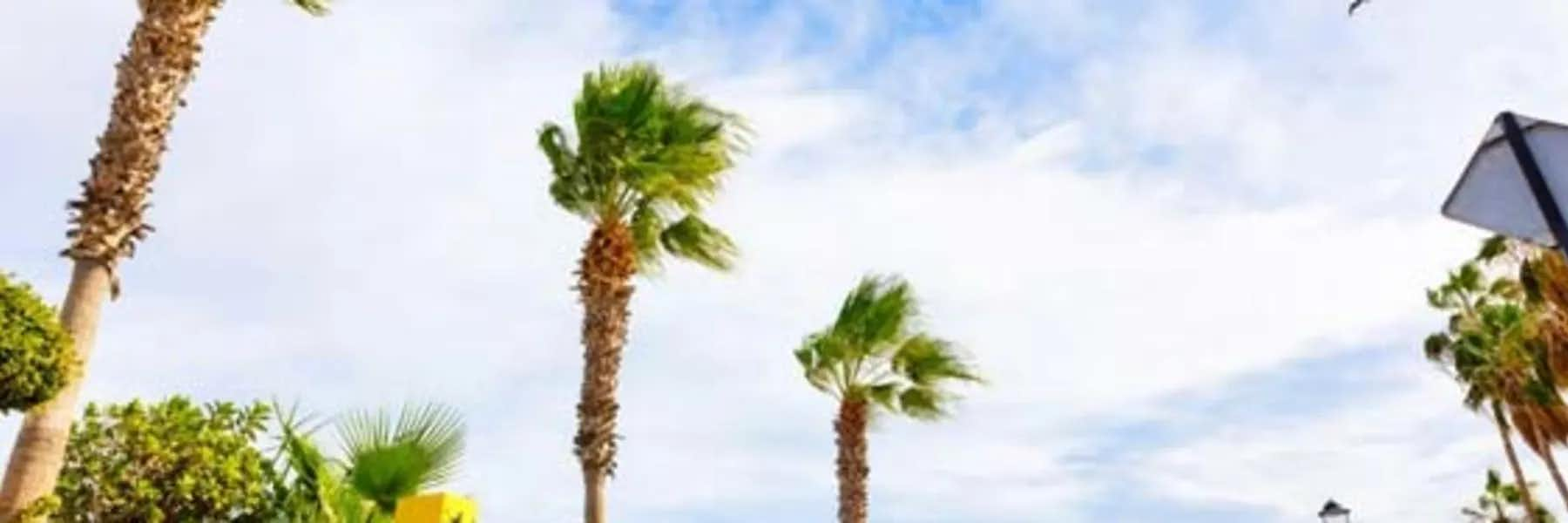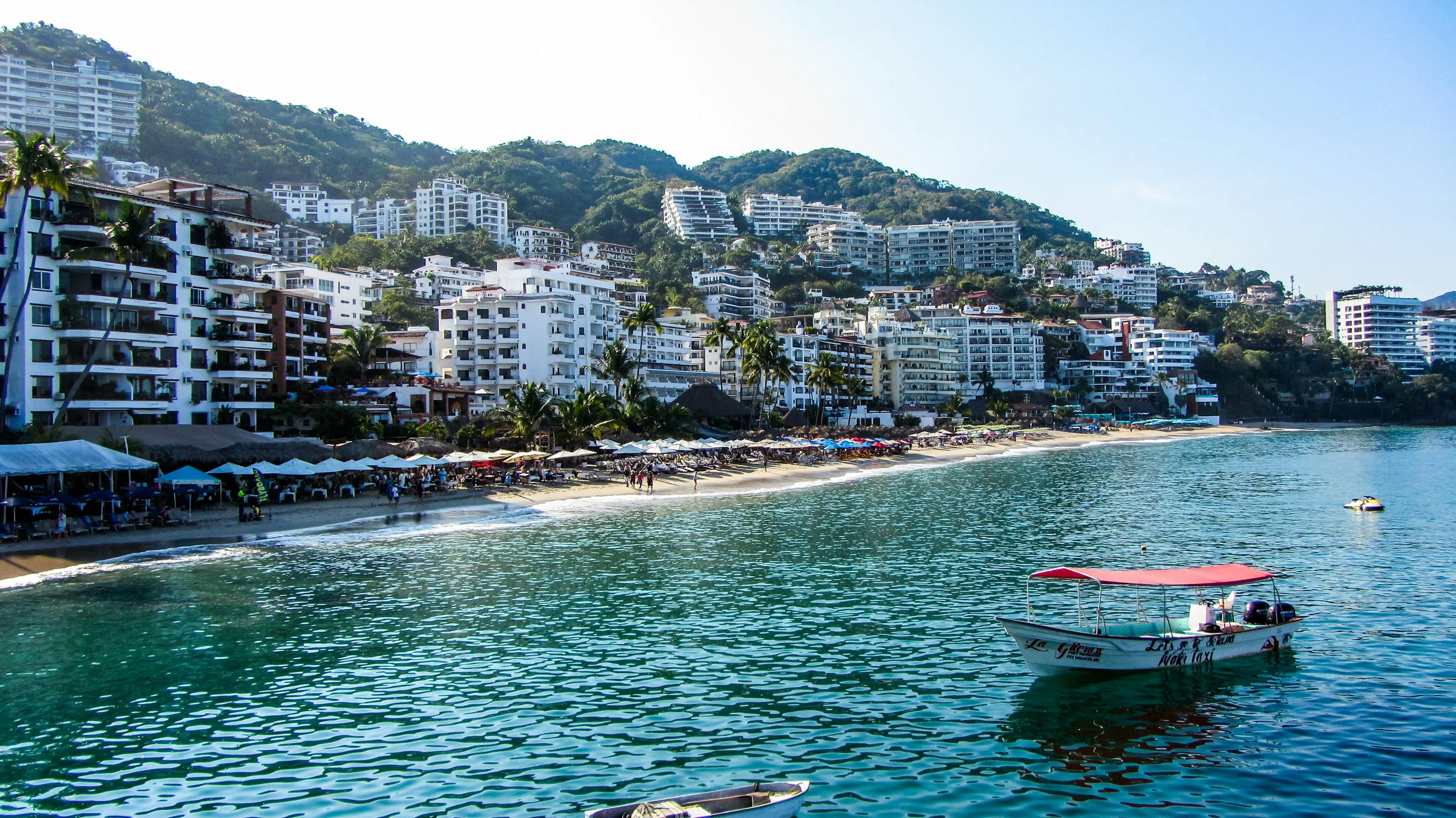Loreto is an oasis of tranquility where you can watch the sun rise over miles of Sea of Cortez shorelines to the east and then in the evening watch the sun set over the San Francisco mountain range to the west. Loreto is a quaint Mexican town halfway up the state of Baja California Sur. The area is a nature lovers paradise where you can climb mountains, bike for miles, and snorkel the islands of Loreto National Marine Park. Worlds away but only six hours north of Cabo San Lucas, Loreto lets you slow down, commune with nature, and relax into a slower pace of living.
Retire in Loreto

The Loreto area is comprised of Loreto, a small town of only 20,000 souls, and three other towns south of Loreto - Nopoló, Tripuí, and Ensenada Blanca. All the towns hug the shoreline and face the Loreto National Marine Park.
Nopoló is the closest to Loreto and is the home of the Loreto Bay development. Only 15 minutes south of Nopoló is Tripuí. Tripuí is home to the marina, Marina Puerto Escondido, which is beginning to build custom housing around the marina. Furthest south is Ensenada Blanca which boasts two resorts and is the prime location for multimillion-dollar homes.
Although, like Los Cabos, Loreto was designated for tourist development back in the 1970s, the area is only beginning to show the signs of development and commercialization. Many of the developments are built as small communities keeping the peaceful, laidback feel of the original city.
The weather in this region is ideal. The winter months are sunny with highs in the low 70s F. The nights drop down 20 degrees for perfect sleeping. The summer months warm up to the 80s with similar temperature drops overnight. June through October is the warmest time of the year with temperatures in the 90s or warmer, yet due to the desert climate in the evening the temperature still dips down to the 70s once the sun sets. Hurricanes do travel upon the Sea of Cortez on occasion. They are not as frequent as can be found further south on the Baja, yet are still potentially as powerful.
Loreto is thought to be the first settlement in the Baja Peninsula. Jesuit Juan María Salvatierra founded the Misión Nuestra Señora de Loreto which was finished in 1697 and still hosts mass to this day. A second mission was erected in the village of San Javier 60 years later. The tiny village of San Javier is about an hour’s drive into the mountains and well worth the trip if for the drive alone.
Loreto is still very rustic so don’t expect Walmart or any Mexican chain grocery stores here. A few small supermarkets are available, and the Big Mart convenience stores are dotted through the area for your basic supplies. Internet service is available and fairly fast and reliable.
The Loreto airport is just south of the city of Loreto. Alaska, American, and West Jet airlines have direct flights bringing a host of west coast American and Canadians. Many Mexican airlines also utilize this airport.
Medical services are available in Loreto. The local community hospital, Hospital de la Comunidad de Loreto BCS, handles urgent care and Covid testing for flights. There are two laboratories in the city to also help with pre-flight Covid testing. A husband and wife English-speaking doctor team provides medical concierge services for $25 a month per person, with a 4-month minimum. They provide annual checkups, OB/GYN, and emergency at-home care.
Get Your Free Mexico Report Today!
Get Your Free Mexico Report Today!
Learn more about Mexico and other countries in our daily postcard e-letter. Simply enter your email address below and we’ll send you a free special report – Mexico: The Perfect Close-to-Home Retirement Haven.

By submitting your email address, you will receive a free subscription to IL Postcards, Overseas Dream Home, The Untourist Daily and special offers from International Living and our affiliates. You can unsubscribe at any time, and we encourage you to read more about our Privacy Policy.
Lifestyle in Loreto

The reason to come to Loreto is the lifestyle. If you are longing to get away from the hustle and bustle of a big city, this is an ideal location. Downtown Loreto is an easily walkable city and very safe. A malecón stretches over a mile from the north side of town down to the estuary, Estero Las Garzas, to the south. In the morning, dog walkers, joggers, and bikers exercise before the heat of the day. In the evening, couples and families stroll in the cool air or rent a bicycle or scooter for their children. The malecón is also the location for the almost monthly music festivals held throughout the year.
Halfway up the malecón is Andador Juan María de Savatierra, a pedestrian-only street lined with restaurants, souvenir shops, a public plaza, and the Misión de Nuestra Señor de Loreto. The mission is both the city’s main church and has a museum teaching about the missionaries who helped develop the city in the 1700s.
The restaurants downtown are sure to please. Fresh ceviche, traditional Mexican dishes, and family favorites like pizza, are all exceptional for such a small town. The fresh ingredients and friendly service make any meal enjoyable.
The Loreto National Marine Park is the main draw of the area. Seated in the Sea of Cortez which was nicknamed “The Aquarium of the World” by Jacques Cousteau, are a series of five large islands: Santa Catalina, Danzante, Carmen, Coronado, and Montserrat. In 1996, 790 square miles of sea and islands were designated as this national park to bring the fish, animals, birds, flora, and fauna under national protection. In 2005 UNESCO recognized the area as a World Heritage site. Local pangas, small boats, are happy to shuttle you to the islands for snorkeling the coral reefs and a chance to see blue and humpback whales from December until March. A host of dolphins, sea turtles, angel fish, puffer fish, parrot fish, and others can be seen up close and personal all year long. On the island, frigate birds, blue footed boobies, and brown pelicans can be spotted along with flowering plants, cacti, and amazing natural rock formations. If you are more adventurous, join half-day or weekend sea kayak expeditions for a truly one-of-a-kind experience. Many people paddleboard near the malecón or even out to the islands.
Fishing is another draw in the areas. Snapper and seabass can be found throughout the year. Winter and spring bring out the yellowtail, roosterfish, and Pacific Sierra. Summer and fall are the best seasons for fishing drawing dorado, marlin, sailfish, tuna, and grouper. In May, Marina Puerto Escondido hosts an annual fishing tournament for dorado and yellow tail, as well as billfish in the catch and release category.
Onshore you can hike the islands in the Loreto National Marine Park or climb Tabor Canyon. The Tabor Canyon Trail provides both hiking and rock climbing toward the Sierra de la Giganta. Another mountainous hike takes you to the Canipole Cave Paintings made by the indigenous people of Baja long before the missionaries arrived. Horseback riding, biking, or ATV rides are exciting ways to explore the local mountain ranges as well.
Cost of Living in Loreto

The prices for daily expenses in Loreto are similar to those of La Paz(link) which is quite a bit less expensive than Cabo San Lucas. The wild card in living expenses is housing. The cost of living in the Loreto area really depends on where along the coast you live.
Choices for home purchase in the area range from empty build-your-own-lots to multi-million dollar estates with pristine views. In the Loreto city limits, rustic homes needing a bit of TLC can be had for around $100,000. The new developments in Nopoló start at $200,000. Custom homes in Ensenada Blanca can be found for $5 to $10 million.
Renting is a wonderful way to learn where you want to live, but is a challenge here as there are not many units for rent. If you can find a rental, you may be able to rent a modest home in Loreto proper for about $600 a month. Down the coast, the new development of Loreto Bay in Nopoló, offers rentals starting at $1000 a month. Further south, rentals begin at $2000 for top-of-the-line, major square-footage homes.
Featured Image Copyright: ©iStock/arturogi
Get Your Free Mexico Report Today!
Get Your Free Mexico Report Today!
Learn more about Mexico and other countries in our daily postcard e-letter. Simply enter your email address below and we’ll send you a free special report – Mexico: The Perfect Close-to-Home Retirement Haven.

By submitting your email address, you will receive a free subscription to IL Postcards, Overseas Dream Home, The Untourist Daily and special offers from International Living and our affiliates. You can unsubscribe at any time, and we encourage you to read more about our Privacy Policy.














